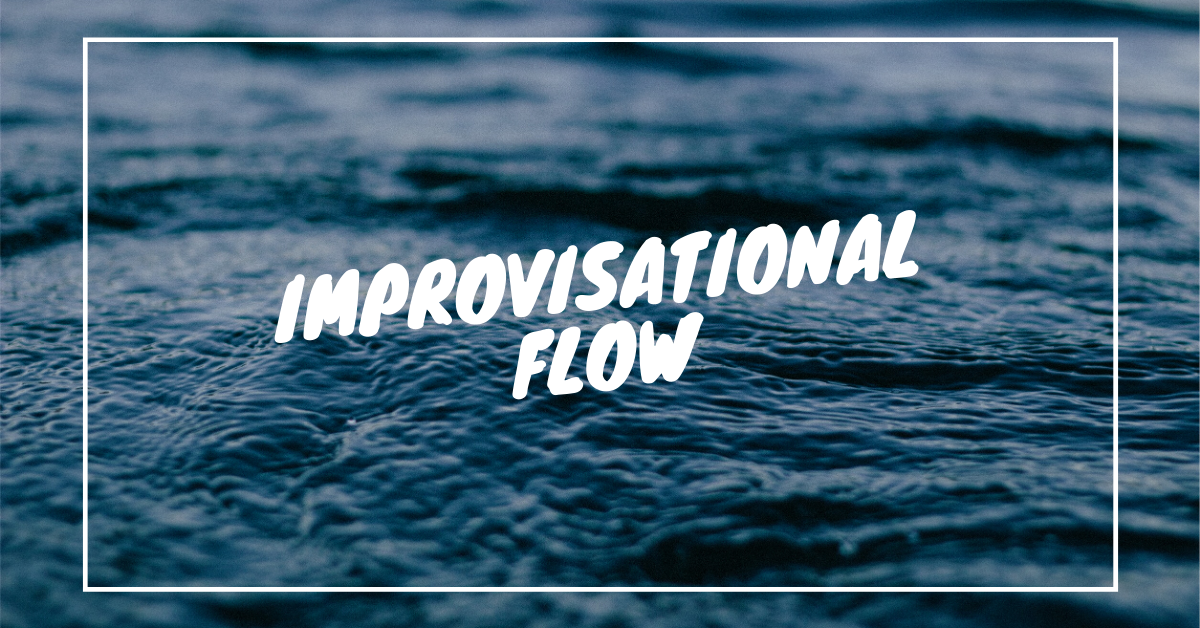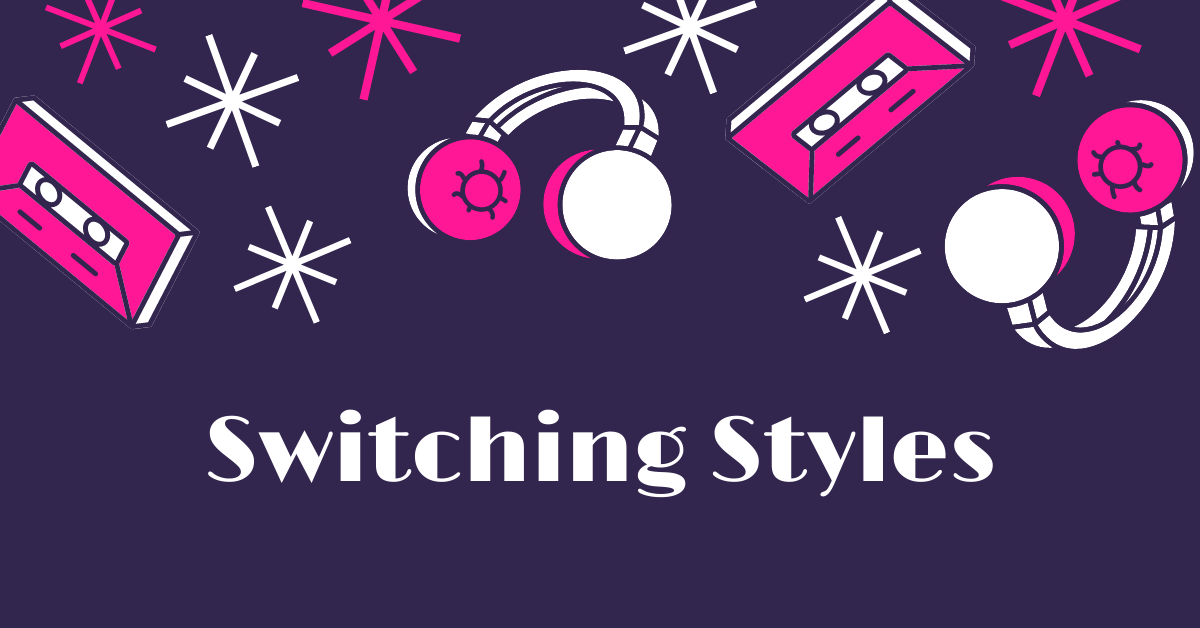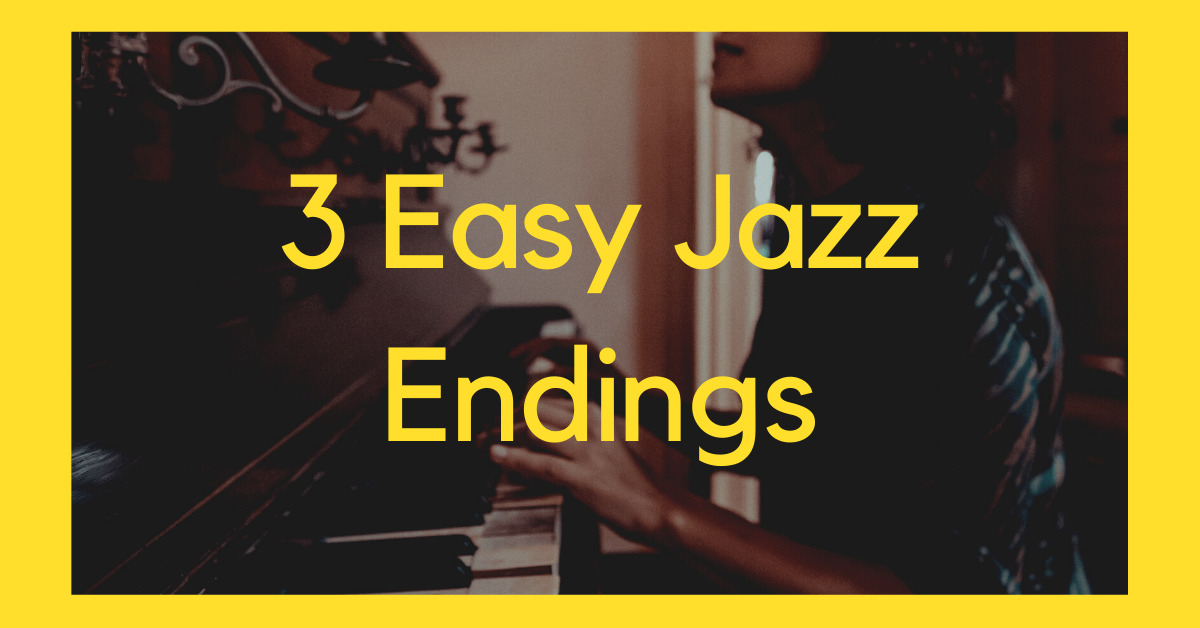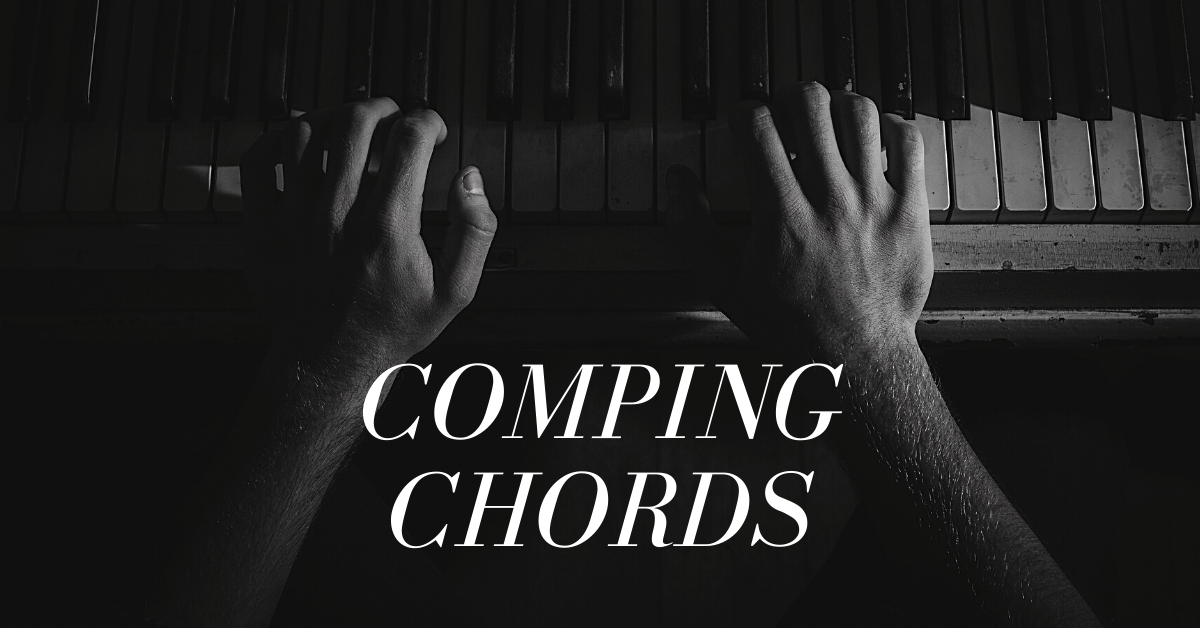6 techniques to improve your improvisational flow.
Hey guys, Willie Myette creator of jazz edge, I want to welcome you to episode number 13 of the confident improviser podcast. All right, so let’s get started here today what we’re gonna be talking about is how to create flowing jazz improvisation lines, I’m going to give you a six different techniques that you can use to improve the flow of your improvisation, right. And what that means is like, you know, when we’re playing
like, rather than a being like, like you feel how stiff that is, we want to make that nice, and
we want to start to get those lines more flowing more even. And just feeling more relaxed. These techniques are going to help you today. Alright, so first of all, who’s this podcast for this really goes in conjunction with the confident improviser program over at jazz edge. So if you’re a member of that program, these podcasts kind of follow along with the exercises. And if you’re looking for a video replay or you want some more information on the confident improviser, just go back to the confident improviser.com. Alright, so how to create flowing jazz improvisation lines, the first thing you need to know is that you have to know your chord tones in order for this to work. If you don’t know your chord tones, then you have to start there. And I would suggest checking out my piano essentials program for that. So now when I say chord tones, I say like, Okay, if I’m asking you, what’s an F major seventh chord, you should be saying F, A, C and E natural, okay? If I say E flat seventh chord, you should be saying E flat, G, B flat, D flat. All right? If that is confusing to you, or you do not know that, then you want to make sure you go through piano essentials and really focus on those chord tones. So you can learn those chord tones. Why is that important? It’s important because when we improvise, we can utilize chord tones in our improvisation and it’s always going to sound good. So Isn’t that awesome? To have a technique that we can use? It’s always going to sound good when we improvise, you know, and they’re always going to work. Alright, so maybe you don’t believe me? So let’s pull up I real pro here. Let me put on this is just the first two measures of days of wine and roses. Take a listen, just using chord tones.
Alright, so now sounds pretty good, right? I mean, again, you know, you’re probably not going to win any improvisational awards. But the point is, it sounds good. It works at it, you could always grow from them. Alright, so what’s the first step in making this happen? The first step is you have to pick your starting note and your target note. Now, one thing that I like to do when it when teaching improvisational lines and kind of thinking about improvisation is that there’s always a start, and there’s always an end. Okay, so you want to think of your improvisation lines, like a sentence. Like I just said that sentence. I’m going to go to the movies with my friend. Okay, well, there’s the my sentence, I had a starting part of it. I had an ending part of it. And then we also know that if we write do something like that I started sent it, and then I don’t finish it. Well, that feels kind of weird, doesn’t it? It’s like, what what, what are you going to say? So we need to hear the beginning part. And we need to hear the end part, we need to hear a full thought. And that’s what we’re trying to do with our improvisation if we don’t think about the starting note in the ending note that we might be starting or ending on a note that’s not going to sound all that great. Let me give you a quick example of that. So here’s Jason winder, Rosa again, listen this.
Right, so can you hear some of those starting notes and any notes in the line? They don’t sound really that great, do they? There’s an awful lot of tension there. So when we’re talking about starting notes, and target notes or ending notes, think about chord tones. So you see what we have going on here right now is we’re starting on the third of F, and then we’re going down to the seventh of of E flat. Now don’t worry if you can’t see the sheet music, all of the sheet music is going to be available for jazz edge members right in the confident improviser program. So you can just go ahead, login and download all of the sheet music right. So right now on the right hand side Starting on the third of F, which is an A, and then I go down to the flat seventh of E flat, which is D flat. So just start with that very, very simple. Okay, all I’m trying to do is just create a very simple line. So here we go. I could like kind of play around with the rhythm of that. So good. So now I know where I’m going to start my line, I know where I’m going to end my line. The next thing is to fill it in with quarter notes. So in the F major seventh measure, in the first measure, remember, we’ve got two measures going on here, one measure of F major, one measure of E flat seven. So in that F major measure, I’m going to fill it in with F major seventh chord tones. And what am I doing here? Starting on the A, which is my third, I go down to the root, the seventh, which is e, and the fifth, which is C, right? So A, F, E, C, all right, for my F major seventh, you know, a blackboard seventh chord, okay, so the third, the root, the seventh, fifth, and then it resolves nicely up to that flat seven of E flat. Now, still just quarter notes. But now we’re starting to get somewhere.
All right, so sounds pretty good, right? I mean, you know, again, you’re not gonna win any awards in improvisation. But now we’re starting to fill this out more starting to flesh this out more. Okay, that’s number two. Number three, now use eighth notes to fill in the back half, or the back end of the measure. So we’re in four, four times. So the last two beats beats three and four, we’re now going to use eighth notes there. So now we go. Whoops.
With the left hand. So now you can hear that we’re getting a little bit more motion going up. So what are the notes we’re choosing? Well, first of all, again, the third and the root, but then we go down to the seventh, sixth, seventh, and then we go to the seventh of E flat, so rain, and here, we have this D in here, which is the six, you might not think to naturally play that note, the reality is that we’re really not worried about what these notes are right now, the main thing that we want to worry about is we want to worry about getting from the starting note to the target note. And then if you hang with me for a couple more minutes, I’m going to give you a couple of examples that really kind of explain that a little bit more clearly that it really doesn’t matter what the notes are, that you’re playing, okay. Of course, you know, we take that with a grain of salt, of course, the notes that you play, have meaning to them, right. It’s not like you just simply play anything. But the idea is that so many times students worry so much about the notes, and they’re less worried about the flow, and I’m going to show you how even playing notes that we would think that would be wrong. If you play them with good flow. It still sounds good. All right, so this is the third exercise here, just try filling in the back half of the measure with some eighth notes, write the number four, fill in the front half of the measure. So the first two beats, this is where I’m going to do the, you know, eighth notes now. So
here, I’m playing the third, the ninth, the route down to the fifth, and then I go back to the seventh. And then I go to the seventh of E flat. So what you notice is that it’s pretty much all chord tones is a little passing tone in there of the night. But for the most part, it’s all chord tones, right now number five, do the whole line in eighth notes. So
okay, so here we have 39667 to the fifth and then to flat seven for E flat. Okay, so, A, G, F, D, C, D, E, C, D flat, all eighth notes, right, the last one number six is Try creating your own eighth note lines, but this time use rest and upbeats. So this time, what I did was I didn’t start right at the beginning of the measure, I did an eighth note or an eighth rest, right? And then came in on the, the the upbeat of the first beat, right? So the D bar by d by d by d, but do so.
Now, here, you’ll notice that I’m starting on this chord tone, right, the A, and then it kind of goes down to the ninth, then to the seventh, then to the root, okay, in here, I’m starting on a weak beat on a chord tone, right. But it still sounds nice, even though that the ninth is on a strong beat. I like the sound of that. And let’s also see how we have that kind of going from the ninth, the G down to the E, and then I come up to the app, so we kind of enclose that F, and the rest of this f EDC kind of walking right down that F major scale, and then moving right to the E flat seven, the seventh. Alright, so now you got these six, six different techniques, what is it that we’re really trying to do? Okay, I can sum it up for you right now, we’re trying to get from here to there, right, trying to go there to there, and we’re trying to fill in the space. Now the techniques that I’m giving you here is a way to like really kind of codify it and make it a little bit easier for you to be able to approach filling in that space, if you’ve never done it before. But if you have a little bit of scale, or you just want to try winging it, then what you could do is just simply put on the railroad track or put on a backing track, and then you just kind of play and see how many lines you can come up with going from there to there. Now, what you’re going to notice is that you will get kind of jammed up right with your rhythm, right? So let me give you let me play it and give you some examples as I play it. So here’s an example of getting jammed up. Well, I wasn’t able to, I wasn’t able to get it right on the beat, right? So I gotta make sure I get there on the beat. So I had to kind of jump down to where my thumb, right? So let me try it again. Better. Whoops, we ended up ending. See, I can create this, like literally dozens and dozens of lines. And all I’m trying to do is go from there to there. Why practice that? Right? The question might be like, well, Willie, why don’t I just practice improvising, going from F to E flat and just kind of do do whatever it is that I want to do? Those target notes, the starting notes, and especially the target notes help to define your improvisational line, right, when you have those target notes, you have kind of like a foundation in place that then now you can start to build on top of if you don’t have those target notes, then what’s very easy to have to happen is on those strong beats, when you have that new chord like the E flat seven coming up, you end up hitting a D natural or something, or an E natural. Well guess what, those are not going to sound very good, it’s gonna make your improvisation sound like garbage. And you’re not going to be defining the chord anymore, because this is not part of the E flat dominant seventh chord, right. And then the flat nine is not a very strong resolution either. So by having those notes in place, that you’re trying to get your improvisation to meet those, you know requirements, you’re trying to get that to that line to that target note. Now what you’re actually practicing is how to manage the space between the notes. Okay, so you already have a shell, you already know, like, if you go back to step one here, you already have a shell, okay, I know I’m going from A to D flat, but I want to keep going with the song, you know, a minor seven, I could go to C and then D seven, I could go to an F sharp, right? So I can like kind of shell out using my chord tones or my guide tones or whichever one I want to do. Okay, you use those chord tones to really shell out and create a foundation for my improvisation that then I fill in. But you have to practice that filling in if you don’t practice the filling in and you just think hey, I’m just going to put these foundational notes in here and I’m just going to go for it. Well, you’ll probably find that you’re going to miss That target notes, because you have to get used to feeling and hearing how many notes there are in that measure those eight eighth notes, right. And especially if you’re going to do eighth notes, you know, trying to get eight notes. Now, notice this, you can use chromaticism throughout. So like you could start here, going here, you’re going down there. So now let’s just count it out. 12345678. And we end there. Well, wait a second, can I really just use those eight chromatic notes? And then another D flat? Guess what? Let’s take a listen. You tell me.
You bet works quite nicely, in fact, right. So now you have all these other notes in here. And you might say, Well, wait a second,
I’m playing in G flat, I’m
playing in a flat, right? All on an F major seventh chord, how can that possibly work? It works. Because those are heard as passing tones, you’re just kind of passing through them. The main tones, again, are that a down to D flat, A to D flat, what you fill in in the middle, really kind of matters less, as long as you do it with good rhythm. So let me give you some other examples here, some kind of outlandish examples as well.
All right, so you can hear that I’m doing all I’m practicing all these different variations. And some of them are just crazy, right? Right, like notes that you just wouldn’t normally play over an F major seventh chord. But as long as you do it strong. And you start with your strong starting note, and you have a strong target note, guess what? It all works out in the wash. It all works out in the end, as long as you play it strong. Now, let’s talk about what I am not saying. I’m not saying that you could just play a bunch of garbage, and just be like, oh, wow, there you go. That’s what I want to do right now. No, I mean, like, there always has to be a good musical sensibility. But the challenge when when it comes to improvisation is that a lot of times, we think it’s really so much about the notes. Oh, it’s all the notes that we’re playing? What are the notes? What are the right scale? You know, we don’t think enough about the rhythm. We also do not think enough about the flow. Because remember, I’ve played several exams, I’m not gonna bother to bore you with it now. But if I play with bad flow, play all the right notes, it still sounds bad. But if I played the quote, unquote, wrong notes, but I play it with good rhythm and good flow, it sounds okay. You know, it doesn’t sound you know, it doesn’t sound great. But it doesn’t sound terrible, either. Right? Now, if we have some organization here in which we have some target notes, right, starting notes, target notes, and then we start to fill in between there. Now that organization as you just heard it, right, it sounds good, right? You might not love every single line. But at least you’re going to be able to get through the song. And you’re going to be able to put together a solo, because you have these main kind of like, like buoys that you’re getting to these waypoints as I like to call them, right. Like, these are points in the map that Okay, we’re gonna go there, then we’re going to go here, then we’re gonna go here, then we’re gonna go here. Now what happens in between those points? Yeah, you know, it might be a great adventure, it might not be a great adventure adventure. But the point is, as long as you get to those points, you’re going to reach your destination. I also want to remind you that I have my new standards by the dozen course, which is going to be starting this week, right? So if you’re a member of jazz edge, you’ll be able to take advantage of that course. And if you have questions on the confident improviser, be sure to join me on Thursdays at 1pm. And you can The link is right in the members area. And then you can ask me any questions and get feedback on your upline? Alright, so anyway, that’s it for me guys. Thanks a lot and I will see you soon.






